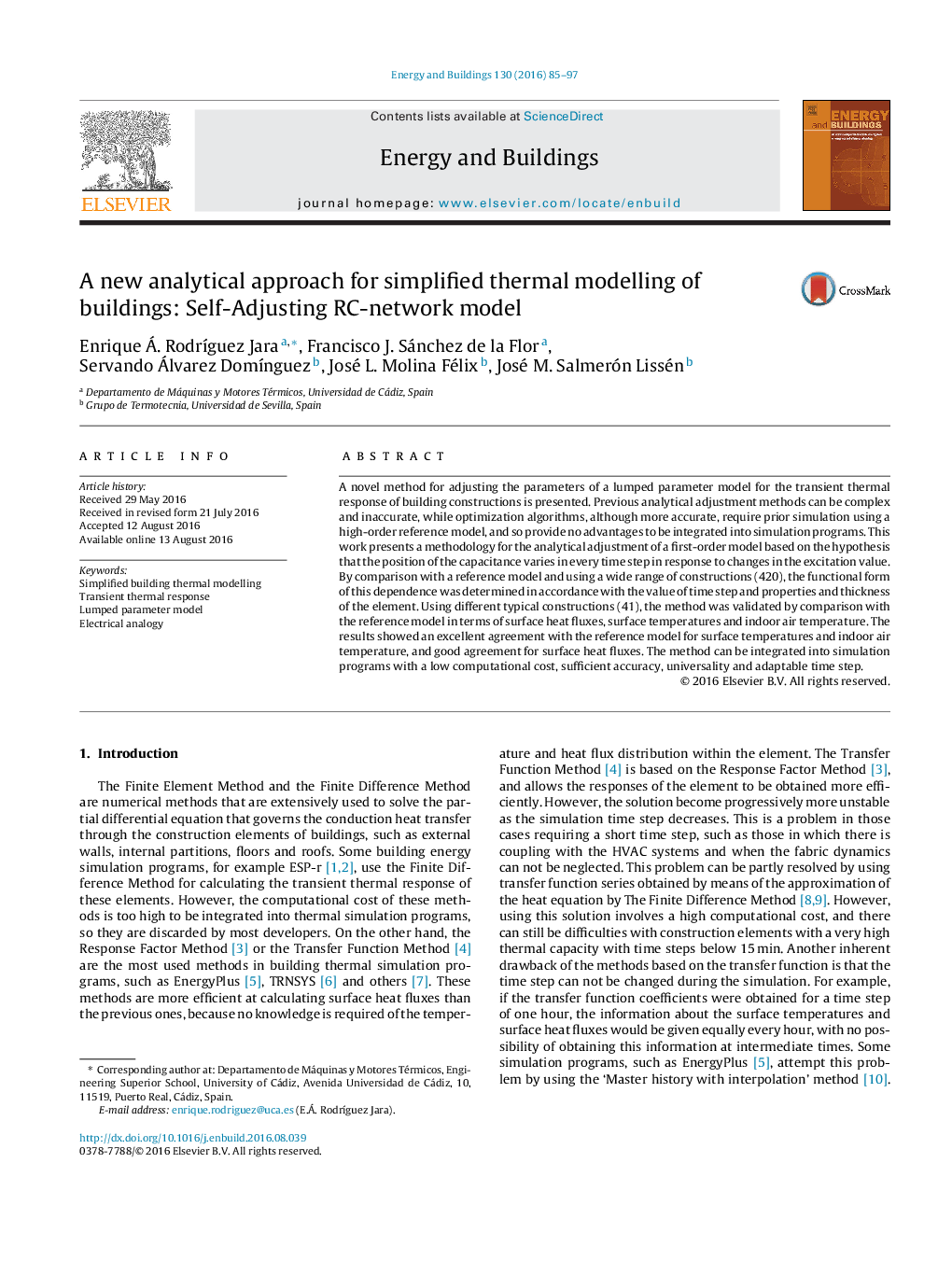| Article ID | Journal | Published Year | Pages | File Type |
|---|---|---|---|---|
| 4919577 | Energy and Buildings | 2016 | 13 Pages |
Abstract
A novel method for adjusting the parameters of a lumped parameter model for the transient thermal response of building constructions is presented. Previous analytical adjustment methods can be complex and inaccurate, while optimization algorithms, although more accurate, require prior simulation using a high-order reference model, and so provide no advantages to be integrated into simulation programs. This work presents a methodology for the analytical adjustment of a first-order model based on the hypothesis that the position of the capacitance varies in every time step in response to changes in the excitation value. By comparison with a reference model and using a wide range of constructions (420), the functional form of this dependence was determined in accordance with the value of time step and properties and thickness of the element. Using different typical constructions (41), the method was validated by comparison with the reference model in terms of surface heat fluxes, surface temperatures and indoor air temperature. The results showed an excellent agreement with the reference model for surface temperatures and indoor air temperature, and good agreement for surface heat fluxes. The method can be integrated into simulation programs with a low computational cost, sufficient accuracy, universality and adaptable time step.
Related Topics
Physical Sciences and Engineering
Energy
Renewable Energy, Sustainability and the Environment
Authors
Enrique Á. RodrÃguez Jara, Francisco J. Sánchez de la Flor, Servando Álvarez DomÃnguez, José L. Molina Félix, José M. Salmerón Lissén,
